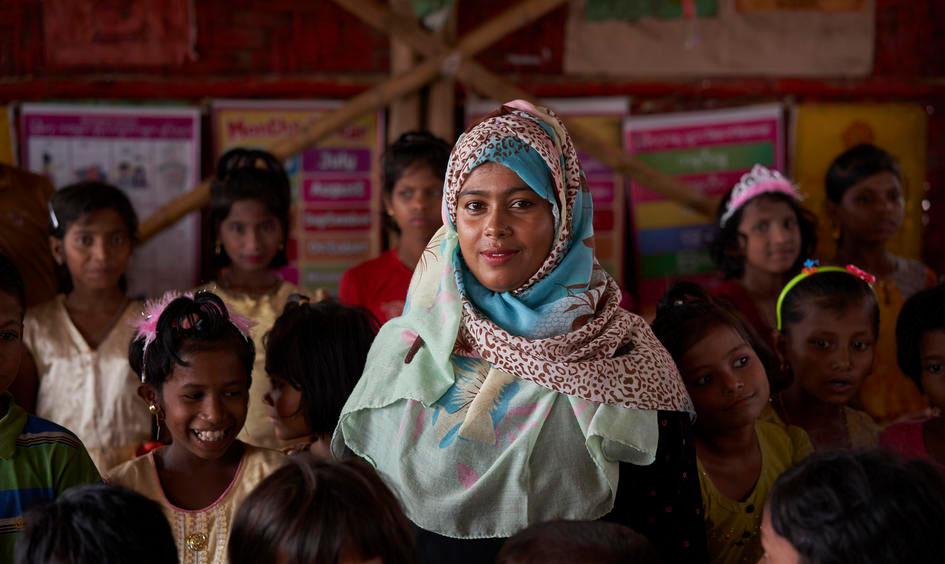© TILLTALANDE: Co-creating change in Jordan
Contact details
Submitted by: Tri-lateral NGO Partnership – Jordan Hashemite Fund for Human Development; King Hussein Foundation & Jordan River Foundation, with multi stakeholder support (pooling of resources)
Website:
VIDEO: TILLTALANDE: Co-creating change in Jordan
Introduction to the project
Country
The Hashemite Kingdom of Jordan
Duration
The project has been ongoing in some capacity since the start of the refugee crisis noting that 83% of refugees live in urban areas.
The project is on going as the focus is on capacitating national institutions to ensure that solutions are embedded and sustainable.
Description
Ensuring a wide protection space and access to assistance for both refugees and vulnerable host communities through the complementarity of service delivery, whilst building resilience to bear the burden of ongoing displacement.
Project aims
Ensuring multiple protection outcomes for the benefit of the most vulnerable in Jordan. Enhanced protection responses for refugees bring with them a strengthening of national institutions and national capacity, to enhance the overall protection response in Jordan, supporting impacted communities and enhancing resilience while simultaneously embedding sustainable solutions within national frameworks. Through a community-based protection approach the most vulnerable are offered pathway to self-reliance.
National protection services, in particular in response to sexual and gender-based violence (SGBV) and child protection, were strengthened by providing support and training to community-based organisations. Across Jordan, 21 community support committees (including a comprehensive CSC in east Amman working in accordance with the One-Refugee approach through volunteers from 6 nationalities) promote community engagement, inclusion of all community groups, and provide a platform to disseminate important information on issues that affect vulnerable groups as well as providing a safe space for integrated community discussions alongside offering activities to address the needs of the vulnerable – education for children with specific needs; rehabilitation services both physical and psycho-social and activities tailored specifically to the elderly, the disabled and survivors of abuse and torture. These joint interventions contribute to stronger long-term outcomes whilst building peaceful coexistence and social inclusion across the community. Interventions extended to offer access to sustainable jobs, encouraging real self-reliance.
VIDEO: People with disability participating in Robotics competition ("Determination, Hope, Achievements").
Resources used
The overall refugee response is managed by the Government of Jordan through the Jordan Response Plan (JRP), offering a strategic, coordination, planning, advocacy, and programming platform for humanitarian and development partners to respond to the Syria crisis within Jordan.
The 2019 JRP plan seeks to bridge the divide between humanitarian and development objectives, recognising short-term people-centered needs, whilst also planning a more development orientated approach to deliver on medium to longer term systemic and institutional fragilities. The plan continues with its resilience-based approach to respond to and mitigate the effects of the crisis on Syrian refugees and Jordanian people, host communities and institutions by integrating humanitarian and development responses into one comprehensive vulnerability assessment and one single plan for each JRP sector.
Additionally, Jordan has benefitted from key initiatives such as the Jordan compact and the Global Concessional Financing Facility, supporting economic stimulation in response to support of key refugee needs.
Partners
- Jordan Hashemite Fund for Human Development
- Jordan River Foundation
- King Hussein Foundation
- Key donor agencies
- Civil society
- National bodies, INGOs and UN agencies
- Refugees and non-refugee volunteers
Challenges and how they were overcome
Challenges:
Strong coordination is required to ensure that all key stakeholders are able to implement their activities and to ensure that there is real complementarity between the services delivered.
Ensured funding is required to help individual NGOs scale up sufficiently to meet the on the ground needs.
How they were overcome:
Within Jordan, under the JRP, key sector working groups help to ensure that the vital close coordination amongst stakeholders is guaranteed.
Alongside coordination, SOPs were developed, a referral system across various stakeholders was put in place and a MIS to enhance quality, outreach and coordination.
VIDEO: Success Stories from the CLH (قصص نجاح كوليبري)
Results of the Good Practice
- Increased access to quality medical, mental, SGBV and child protection services
- Increased social cohesion across the community
- Increased educational outcome for refugees
- Increased services for the Elderly and persons with disabilities (PWD)
- Increased financial security
- Increased and strengthened role of community and civil society in responding to refugee and displacement situations
How the project meets the GCR Objectives
Objective 1: Ease the pressures on host countries
Objective 2: Enhance refugee self-reliance
Next steps
Yes, national NGOs continue to contribute to national mechanisms, such as the National Family Protection Team, helping to ensure long term sustainability.
Developing an inclusive MIS to serve both refugees and host communities, and continue capacity building.
VIDEO: About the CLH


